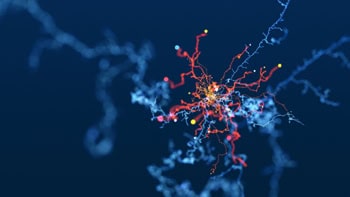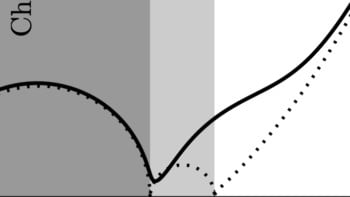Anna Demming reviews How to Expect the Unexpected: the Science of Making Predictions and the Art of Knowing When Not To by Kit Yates

Middle bias, randomness bias, linearity bias, normalcy bias – the list of cognitive glitches that can send us chasing after red herrings or playing into the hands of manipulators goes on and on. With so many forms of faulty cognition vying for our attention, it’s a wonder any of us achieve anything at all. In How to Expect the Unexpected: the Science of Making Predictions and the Art of Knowing When Not To, Kit Yates explores these biases and psychological traits in detail, showing how they muddy our interpretations of events and how some of them even contradict each other. Better still, by working through the mathematics and logic of events, Yates aims to make us better prepared to expect what we would not otherwise have expected.
Yates’ discussion of game theory is delivered so intuitively that you may be left wondering what is so complicated about it to captivate some of the most esteemed mathematical intellects of the past century
As a senior lecturer in mathematical sciences at the University of Bath, UK, Yates is a pro at presenting maths in simple terms. His discussion of game theory, for example, is delivered so intuitively that you may be left wondering what is so complicated about it to captivate some of the most esteemed mathematical intellects of the past century. But you don’t need to trawl too far through the scholarly literature on game theory for confirmation that this apparent simplicity is at least partly due to Yates’ deft articulation, which manages to dodge the matrix algebra and other technical tools so often invoked. There is not a single equation in the book, but they are not missed, since the (inevitably wordier) descriptions that replace them never come across as arduous.
The anecdotes Yates uses to illustrate these mathematical principles help make the book compelling to read. From the stupendously unlucky Deepa Sharma – an Indian doctor who was killed by an avalanche in Himachal Pradesh where “the results of a positive feedback loop [the displacement of an initially small stone is amplified]…cost her her life” – to the incredibly fortunate Mike McDermott – an English electrician who exemplified the laws of probability and very large numbers when he scored five-figure lottery wins twice in a few months playing the same set of numbers – these examples are all the more engaging for their human details. Another example illustrates the perils of metrics becoming targets in performance-oriented policies. Here, Yates doesn’t just highlight problems at a specific US hospital. He also narrates in detail the plight of a Vietnam veteran, Walter Savage, who became one of many individuals to suffer as a result.
In places, there are so many anecdotes that it starts to feel like the maths in the book is merely a plot device to string together intriguing stories. But as well as being beguiling in their own right, all these examples are highly effective at demonstrating how worthwhile it is to have a basic grip on mathematical ideas. Yates’ argument for the relevance of these ideas is also not limited to anecdotes. It embraces broader principles, too. An example is his discussion of Bayes’ theorem, which describes the probability of an event based on prior knowledge of conditions that might be related to the event. Yates explains this in terms of the location of a randomly positioned marker. An initial guess would suggest the marker is equally likely to be anywhere. However, new information as to whether a subsequent series of random points falls to the right or left of the marker can update this initial guess in a way that “eventually converg[es] towards the truth”.
While Bayesian thinking is undoubtedly a useful way of statistically informing what is not really known, Yates highlights a key flaw in our “natural ability to learn from experience in a Bayesian way”: we end up valuing ourselves based on the treatment we experience. These real-world Bayesian updates to our outlook are worth noting because they can hamper us from achieving our true potential and limit our aspirations, particularly in sectors where no-one like us has excelled before.
Yates includes plenty of personal examples too, from exploits with his kids to the book’s opening gambit: a trip to see Paula, a self-described psychic. Any readers who cherish a faith in mystics and clairvoyants should consider themselves warned: what follows is a gloves-off debrief of the various ruses a psychic may implement. The true stories he later shares – such as psychics ruthlessly targeting the bereaved and vulnerable to make money, or sending police tracking a missing person off on a wild goose hunt – suggest his critical tone is justified.
There’s nothing bland or robotic in Yates’ writing style, and while this real human zeal may not always be flattering (a comment about studies of cats falling from high rises in the 1980s “when apparently there was nothing better to study” being a case in point), it imbues the subjects covered with an infectious enthusiasm, artfully dispelling the dry, stuffy perceptions many people have of maths. Many physicist readers will, of course, find the maths itself genuinely fascinating, encompassing as it does topics from combinatorics to chaos. Some may even feel disappointed not to be invited deeper into these mathematical mysteries, but as in his first book, The Maths of Life and Death, Yates’ aim is more to familiarize the reader with the basic principles and why they matter, rather than to delve into the details.
Overall, How to Expect the Unexpected is well placed to equip us with the maths needed to make better choices and avoid the pitfalls of circumstance. Indeed, I suspect it will leave many readers frustratingly wiser in hindsight at what we should have done. Nonetheless, its greatest achievement may be that it exposes everyone’s potential to grasp mathematics, even those who are convinced they are rubbish at it. In this respect, its conclusion is delightfully clear: QED.
- 2023 Quercus 448pp £20.00hb



